The Google Pixel 3 Review: The Ultimate Camera Test
by Andrei Frumusanu on November 2, 2018 11:00 AM EST- Posted in
- Smartphones
- camera
- Mobile
- Pixel
- Snapdragon 845
- Pixel 3
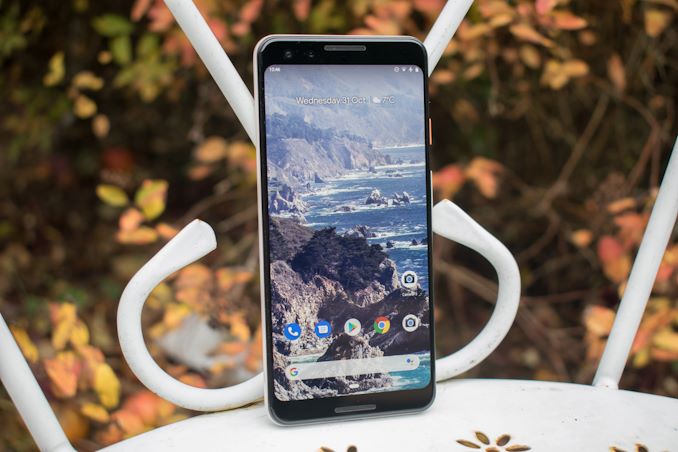
The Pixel 3 is Google’s third generation in-house design, meant to showcase the company’s own view of what an Android device should be, whilst fully embracing Google’s first-party software applications and services. The one thing Google’s Pixel phones have become synonymous with is the camera experience. The Pixel 3 continues this focal point of the line-up, and promises to be “the best smartphone camera”, period.
Alongside Google's forte, software, this year's Pixel family has pushed forward with a few hardware design choices, some of which we might have liked to have seen last year. The new units have updated panel technology, integrated wireless charging, and even fast wireless charging. Also now for Google, the Pixel 3 actually looks like a current flagship smartphone, compared to the Pixel 2 which did not at the time.
This year’s Pixel 3 phones hope to maintain the software advantages, doubling down on them with various new innovative features, especially on the camera side, whilst addressing the hardware aspects to be considered a true vendor flagship of a very competitive generation.
In this full analysis of the Pixel 3, we'll cover the hardware, the design, the software, and a detailed look to what makes users rave about the camera. We've tested over 18 current and former high-end smartphones worth of cameras to get to our conclusions, with all the analysis contained within these few pages. Commentary is of course, more than welcome.
It should be noted that for this review, unfortunately we only were able to get our hands on a regular Pixel 3, colored in 'Not Pink'. We do hope that sometime in the future we’ll be able to do a battery update on the bigger Pixel 3 XL once we’re able to source one.
Pixel Hardware and Design
In terms of hardware specifications, the new Pixel 3 family follows the many Android flagships trend of this year: at the heart of the phones, the Snapdragon 845 SoC is powering the devices. 2018 has been an excellent competitive year for Qualcomm and the S845 was able to take the performance lead among its Android competition. One thing to note here if you’re considering a Pixel device is that Google’s release schedule is very much out of sync with the silicon vendor’s SoC lineups - meaning users investing in a Pixel are buying a flagship phone whose silicon is by now 8 months old, and will most likely will be superseded by its successor in just a few months’ time. For those that want the leading edge, the Pixel 3 might be a short lived experience. However that doesn't detract from what is under the hood today.
| Google Pixel 3 Family | |||
| Pixel 3 (reviewed) | Pixel 3 XL | ||
| SoC | Snapdragon 845 4x Kryo 385 Gold (Cortex A75 based) @ 2.80 GHz 4x Kryo 385 Silver (Cortex A55 based) @ 1.76 GHz |
||
| GPU | Adreno 630 @ 710MHz | ||
| DRAM | 4GB LPDDR4X | ||
| Display | 5.5" AMOLED 2160 x 1080 (18:9) |
6.3" P-OLED 2960 x 1440 (18.5:9) |
|
| Size | Height | 145.6 mm | 158.0 mm |
| Width | 68.2 mm | 76.6 mm | |
| Depth | 7.9 mm | 7.9 mm | |
| Weight | 148 grams | 184 grams | |
| Battery Capacity | 2915mAh | 3430mAh | |
| Wireless Charging | Qi | ||
| Rear Camera | 12.2 MP, f/1.8, 27mm (wide), 1/2.55", 1.4µm, OIS, dual pixel PDAF |
||
| Front Cameras | Dual 8MP modules Regular f/1.8 75° & wide angle f/2.2 97° FoV lenses |
||
| Storage | 64 GB / 128 GB | 64 GB / 128 GB | |
| I/O | USB-C | ||
| Wireless (local) | 802.11ac Wi-Fi + Bluetooth 5.0 LE + NFC | ||
| Cellular | CAT 16 (1Gbps DL / 75Mbps UL), 5x DL CA, 4x4 MIMO, LAA, 256-QAM DL and 64-QAM UL |
||
| Splash, Water, Dust Resistance | IPX8 (Water resistant up to 1m) |
||
| Dual-SIM | nano-SIM | ||
| Launch Price | 64 GB: $799 / £739 / 849€ 128 GB: $899 / £839 / 949€ |
64 GB: $899 / not avail. / 949€ 128 GB: $999 / £969 / 1049€ |
|
Google also outfits the Pixel 3’s with relatively conservative DRAM and storage options. Both phones come with 4GB of RAM as well as a base storage variant of 64GB, with the option to buy a higher tier 128GB variant. Most of Google's competition are offering 6GB+ versions at similar pricing it should be noted.
In order to combat this low memory, one new hardware/software feature is an application memory management 'lowmmemorykiller' background application/daemon which applies various settings to keep certain software in memory for fast app loading times. Whilst in general I don’t put as much value into this as some other people do, I did however notice that in everyday use the phones did need to reload applications more often. There have been user reports already that the phones are struggling to keep things open and alive in memory. No doubt additional tuning of the memory management will be done through updates and the lifecycle of the unit.
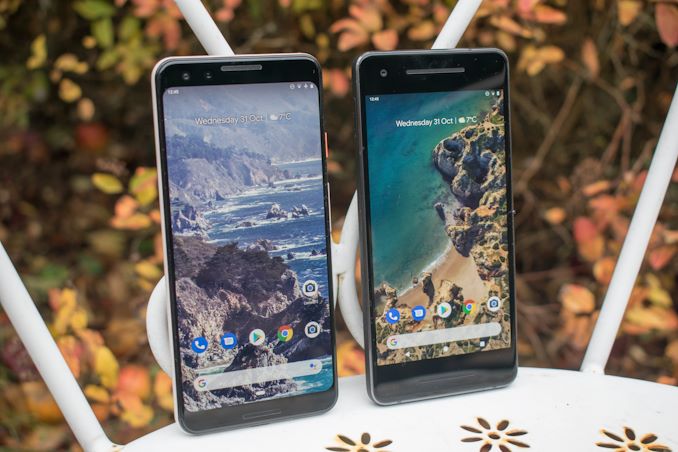
Pixel 3 (left) and Pixel 2 (right)
Design-wise, the Pixel 3 is a big upgrade over the Pixel 2. Gone are the 2015 top and bottom bezels, and instead we find a more contemporary design with an elongated 18:9 (or 2:1) aspect ratio screen, vastly increasing the screen-to-body ratio of the phone. The screen is still an OLED with an FHD+ resolution (2160 x 1080 pixels) – though this year it seems that Google has split suppliers between the small and XL variants, with the Pixel 3 panel now being manufactured by LG while the Pixel 3 XL uses a Samsung panel.
On the front of the device, we luckily don’t need to go into any big controversial discussions about a notch as the small Pixel 3 (As opposed to the 3XL) doesn’t have one. What is new for both of the Pixel 3 smartphones is a secondary wide-angle front-facing camera, allowing for wider selfie shots or simply a wider field of view when doing front video recording or communications, which is actually quite handy.

Pixel 3 (left) and Pixel 2 (right)
On the back of the phone, we also see a big design change: Google has switched over from a metal unibody design with a top glass cut-out, to a full glass back panel. Google still maintains the same contrasting glossy glass design feature at the top of the phone, and achieves this by chemically etching the bottom part of the glass to a matte finish.
The matte feel of the glass is extremely similar to the design of the OnePlus 6’s etched models, and it does stand out as a completely different feel than one might be used to from glass phones. It really helps with the grip, and totally avoids fingerprints. My only issue here is that Google didn’t extend this finish to the very edges of the glass back, as well as leaving out a 1mm ring around the fingerprint sensor, the latter whose shadows on the glass looks very odd and a bit cheap.
Going for a glass back allows Google to now adopt wireless charging, and supports the Qi standard. The phone also supports fast wireless charging up to 10W. Unfortunately again, it seems that Google is only allowing this on certified chargers, thus not really adhering to the Qi fast-charging standard. This means almost all existing 'fast' wireless chargers will be limited to 5W.
Google bundled its own Pixel Stand wireless charging pad with the reviewer kits (It's not bundled with commercial units), and it works as well as it says on the box. One big hiccup I noticed is that the Stand will only accept certain USB-C chargers with PD at certain voltages – so users are restricted to the bundled power supply as well as a limited number of USB C PD chargers to even power it on at all.
It should be noted that the glass on the rear has some flex even under light pressure, and I can hear it touching the internals (charging coil and battery). This was one of the first things I noticed when unboxing the phone, and it makes it feel a lot less well built as for example glass backs from Samsung or Apple.
The camera on the Pixel 3 sees a minor sensor upgrade from the Sony IMX362 to the IMX363 – both units are 12.2MP sensors with 1.4µm pixel pitches. The aperture is also the same at f/1.8. There are no secondary modules here, and Google prefers to fall back to software innovation for improving zoomed in pictures: the Pixel 3 exclusively ships with a new “Superzoom” mode that promises to improve digital zooming, more on this later in the camera section where we’ll have a very big comparison with most of this year’s flagship devices.
The left side of the phone is bare of any buttons, and we find the power and volume rocker on the right side. Google accentuates the colour of the power button, on my “Not pink” pink unit this is a very neon orange that just doesn’t pop up in images as much as it does in real life.
On the top of the phone we find a microphone hole.
The bottom sees the single nanoSIM slot as well as the USB-C charging port. Like on the Pixel 2, the Pixel 3 units do not offer any headphone jack. One argument for the removal of the headphone jack, beyond the by now debunked claim that it offers larger internal space dedicated to batteries, is that it allows for better audio quality. Indeed if headphones have their own DACs built-in, then they can be calibrated to the sound profile of the individual headphones, instead of relying on the phone to serve a correct frequency response. That being said, unfortunately the USB-C earbuds bundled with the Pixel 3 are among the worst I’ve ever listened to and can be easily described as complete rubbish. I would easily choose USB-C earbuds from any other primary smartphone vendor.
In the rest of this review, we cover the following:
- Introduction and Design (this page)
- System Performance
- GPU Performance
- Display Measurements and Calibration Testing
- Battery Life and Power
- Camera pt 1: Daylight with SuperZoom and Scenic
- Camera pt 2: Daylight with Dynamic Range
- Camera pt 3: Low Light and NightSight
- Camera pt 4: Video Recording and Speaker Evaluation
- Pixel 3 Conclusion


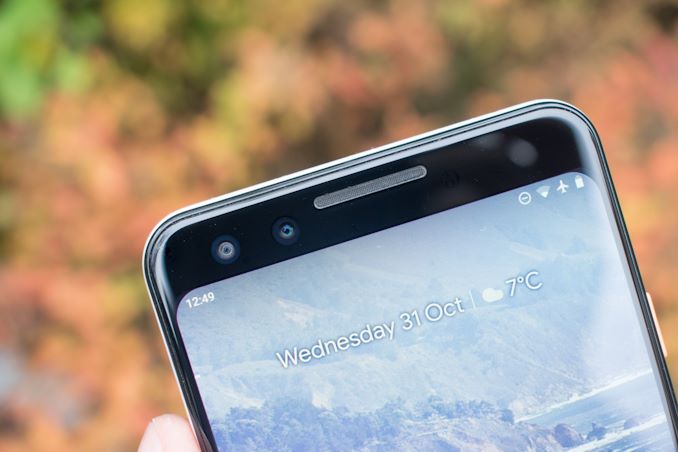


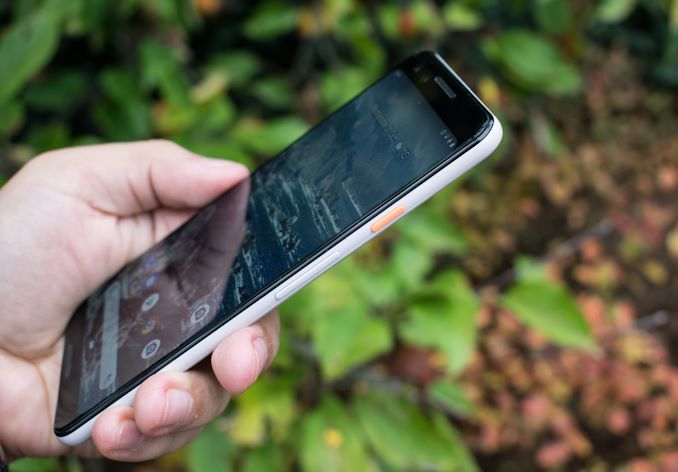
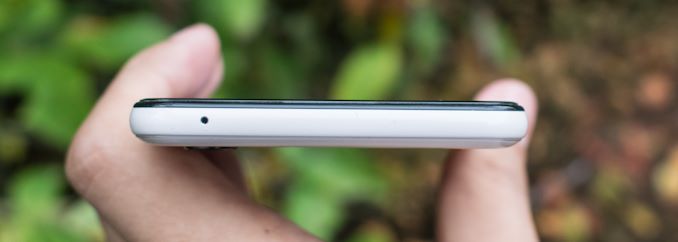









135 Comments
View All Comments
s.yu - Thursday, November 15, 2018 - link
You're looking at this wrong, *flash*, not night sight, should be the last resort. On axis flash is almost always ugly and detrimental to what you're trying to capture, and severely interferes with post processing, night sight saves the need for flash, which is the way to go.sarangiman - Thursday, November 15, 2018 - link
"I’ve never really understood why people claimed the Pixel 2 camera to be good in low-light, because in my experience as well as visible in these sample shots, the Pixels were never really competitive and are outclassed by the better sensors from Samsung and Apple, when capturing in traditional modes."It's not that Samsung or Apple used 'better sensors', they just used longer exposure times (down to 1/4s), while the Pixel 2 would try to stick to 1/25 to 1/40s to avoid motion blur in human subjects, and only reluctantly dropping to 1/15s in very very dark situations.
The reason many were impressed by the low light performance of the Pixel 2 was that it could retain good image quality in *less* low light (but still low light - such as indoors) conditions, while not having human subjects blurred. Also, iPhone motion estimation would jack up the shutter speed (to ~1/30s) when any movement was detected (human subject or shaky hands), and image quality would drop drastically, below that of the Pixel 2 (b/c it wouldn't also average as many frames as the Pixel cameras do). Things have improved with the XS.
So it's a question of *how* low light of a scene are you interested in, and are you photographing human subjects or still scenes.
Thanks for the review, very nice comparisons, and great work in particular with your display evaluation. It's irksome that despite having a proper CMS in the OS, every app appears to be rendering to sRGB. Google Photos app is even color profile aware, but converts images with ICC profiles (say: P3 or even ProPhotoRGB images) to sRGB for output (which means in 'Adaptive' screen mode, the sRGB output gets stretched, yielding oversaturated inaccurate colors). This just isn't how color management is meant to work - the CMS should take the embedded ICC profile and convert to the display profile.
makkumatr - Saturday, November 24, 2018 - link
Love the detailed review, Andrei.Could you comment on the quality of the sound recording of the videos on Pixel 3, reading a lot of complaints on that.
ErikSwan - Tuesday, December 18, 2018 - link
Andrei, thank you for the thorough review, especially the display section.Did you evaluate display uniformity at all? A lot of users (me included) are reporting a green-to-pink gradient across the display. It's very easy to notice with a gray background at low brightness levels in low to moderate light (think: using the phone in bed with only a bedside reading lamp illuminating the room). I'm curious whether only some devices are susceptible to this or if you noticed it on your Pixel 3 sample as well.
Going forward, I would really like to see some measurement of uniformity included in display evaluations. If the dE at the centerpoint of the display is very low, that's great, but if the display isn't also uniform it can be a misleading indication of the overall quality of the display.
Thanks!
ducksu - Thursday, May 16, 2019 - link
What's the best screen mode for pixel 3?